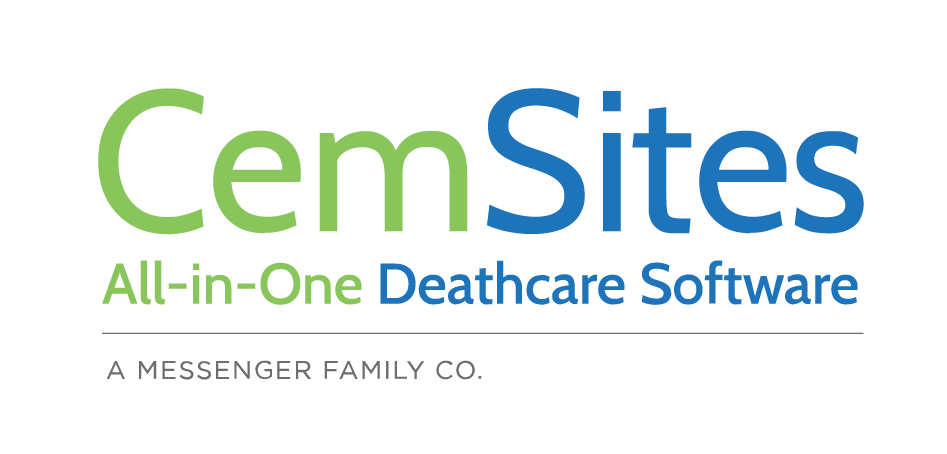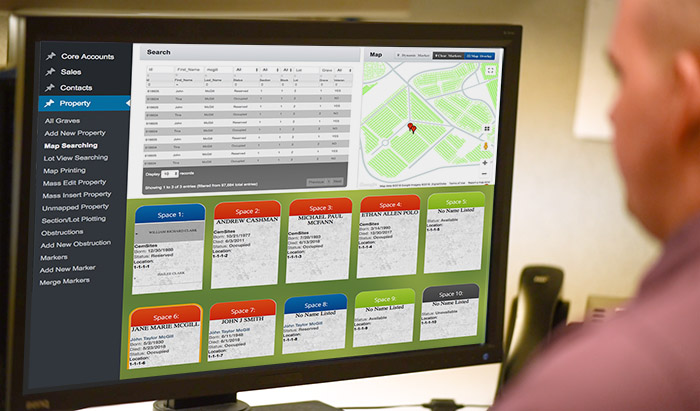By Scott McAfee, Chief Operating Officer, CemSites.
Left behind in the technology era?
There are more than 100,000 cemeteries in the U.S. Each proudly serving their communities with kind, gentle, and compassionate death care services. Unfortunately, most are still using centuries-old techniques to record and manage records. Critical and historical data is still being managed with paper maps, index cards, log books, folders, and filing cabinets. These time-honored processes have worked for a very long time; however, technology is rapidly changing how people behave and interact with businesses. Eventually, these aging management practices may hamper your ability to run efficiently, thrive, grow, and stay connected with your community.
You’re an integral part of the information age now
As a cemetery, you protect and maintain critical historical and community records. You are a data-centric business that wants to be faster, more efficient, and better organized to meet the demands of modern customers and your communities. You would benefit greatly from software that standardizes and centralizes your records. Making it super-easy to access, edit, manage and report your cemetery data. You’ll also take comfort in knowing that all of your data is safely stored and protected. Cemeteries need to adopt new software technology to keep up with this fast-moving technological era. Look out – the millennials will be your customers soon! Quick – how do you digitize and automate your cemetery office?
The old guard: Boxed software
Until recently, there was a limited number of choices for cemetery software. Most were a one-size-fits-all software package. This approach doesn’t work well to meet the full needs of cemeteries, who each have their own unique processes and methods.
Cemeteries who have adopted this type of software typically find themselves using only part of the software, while still depending on older paper processes to fill in the gaps. This mixture only complicates the day-to-day work by further decentralizing data, adding inconsistency, and redundant tasks.
The new guard: Cloud software for cemeteries
With cloud software, your office can now be fully digitized and automated. Imagine looking at your computer, tablet, or mobile device and seeing your entire cemetery operation, and being able to manage it entirely from any of those devices. Today’s cloud software companies create applications specifically for your cemetery. They’ll work with you to fully customize your software and fit it perfectly to your specific needs. They will also support you through the launch, training, and adoption process.
Benefits of cloud software for cemeteries
Everything you used to do on paper can now be done electronically. Our company’s goal is to automate every cemetery’s workflow from A to Z. Many of our clients are completely paperless now – and loving it! With a click of your mouse, you’ll be generating work orders, contracts, deeds, burials records, billing, sending invoices, and generating reports. Completing tasks in minutes when they used to take hours. This level of streamlining and automation will save you a significant amount of time and money.
You’ll visualize and organize records like never before with a custom cemetery dashboard. Enjoy having more time to spend with face-to-face with customers. Help people find their loved ones easier with digital grave mapping, and GPS mobile navigation. Fulfill genealogy requests with minimum effort.
Better record management will result in improved public access to cemetery data and enable you to provide better and faster services. This will help reconnect your cemetery to the community it serves.
What is the Cloud, exactly?
The “Cloud” is simply large data centers using high-end computers to store electronic data accessed over the internet. The Cloud is where your cemetery software and data will be stored. The benefits are amazing. Cloud software never goes out-of-date because it updates automatically. Your data is stored at numerous locations and backed-up throughout the day. You can easily recover your data in the event of a disaster. Data centers are secure locations staffed and protected by armed guards 24/7, 365 days a year.
Let’s get digitized!
Rest assured, no matter what form of data you have, it can all be digitized, uploaded, integrated, and accessed using cloud software. Data from existing software is converted using a process called data migration. During this process, experts analyze your data, clean it up, ensure it’s properly formatted, and upload it into your new software. Many paper records can be scanned with Optical Character Recognition software (OCR) to capture text data. Other important documents can simply be scanned and uploaded as images.
Cost vs. Return on Investment (ROI)
The purchase price for cloud software can vary greatly depending on cemetery size, number of users, and components needed. However, most cemeteries recover their initial start-up cost in the first year or two. This relatively short ROI time frame is possible because cemeteries immediately begin saving valuable time and money by automating numerous time-consuming tasks and processes. These savings don’t stop after the initial ROI. The savings continue throughout the following years and can actually increase as adoption and knowledge of the software improve. Many cemeteries generate additional revenue and growth by expanding their software to include marketing and sales tools.
Life in the Cloud. It’s nice up here!
According to Forbes, “83% of enterprise workflows will be in the cloud by 2020.”
Digitizing and automating your cemetery will help you operate with maximum efficiency, be better organized, provide better service, and be prepared for the future. Yes, you will and save tons of time and money, but more importantly, you will ensure critical historical and community records are protected, accessible, and stored safely. This will help to better serve your community and preserve your cemetery’s legacy. What’s not to love? See you in the Cloud!



